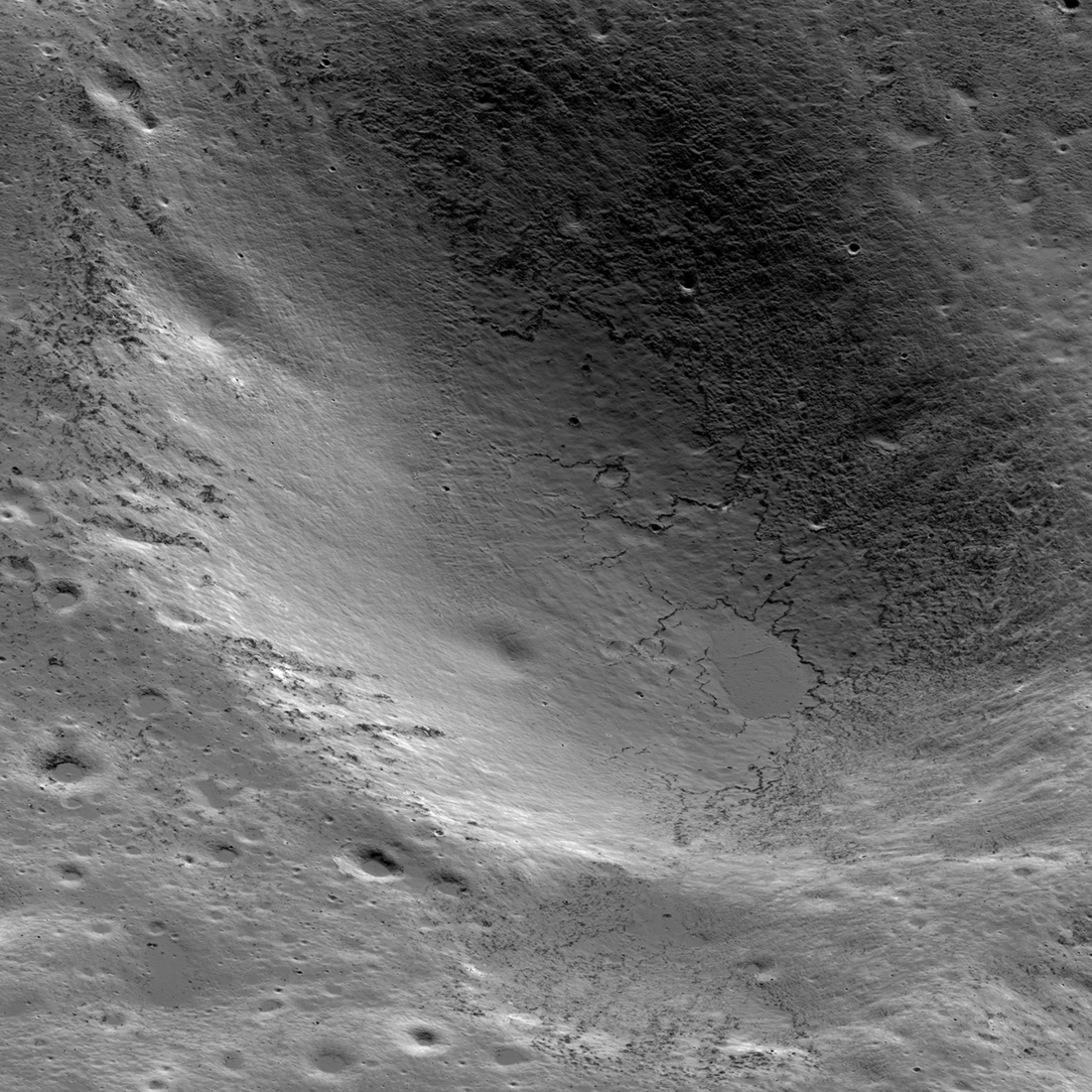
Early in the LRO mission, LROC images of the central farside revealed impact melt deposits with no prominent source crater. Very mysterious. Soon, scientists noticed that these enigmatic deposits were found at the Tycho crater antipode (opposite side of the Moon). Perhaps the Tycho forming event was so energetic that it ejected melt to the opposite side of the Moon, a distance of 5400 kilometers requiring a time-of-flight of 164 minutes. M1451669615, looking west-to-east, acquired 2023-10-11, incidence angle 60°, slew angle 47°, phase angle 110°, spacecraft altitude 112 kilometers, image width 12 kilometers.

The complete NAC oblique shows a portion of the enigmatic highland pond area. Image width is approximately 72 kilometers in the center; north is to the left, NAC M1451669615LR [NASA/GSFC/Arizona State University].
Related Featured Images
LROC NAC Anaglyph: Highland Ponds
An Impact Melt Veneer in the Highlands
Published by Mark Robinson on 25 April 2025